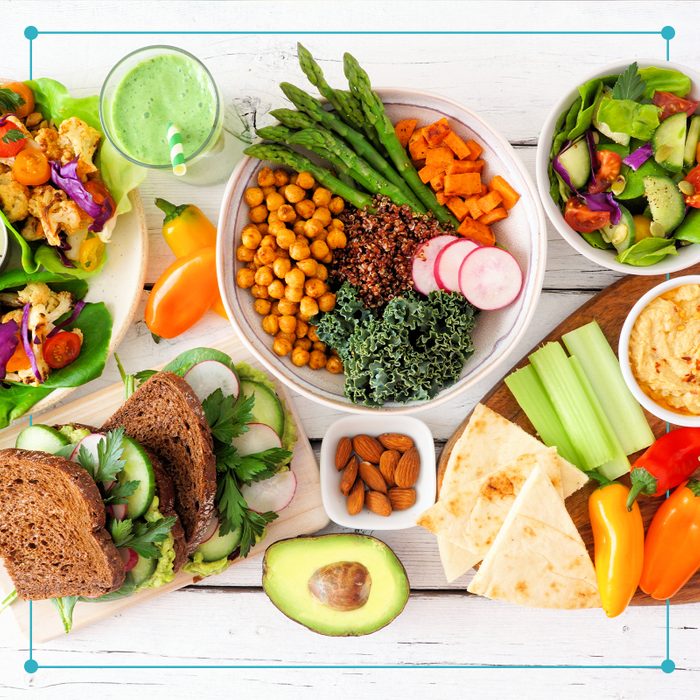
It can feel daunting to be faced with the need to make a major lifestyle change. You enjoy food, and you should. At The Healthy @Reader’s Digest, we like to think nature designed nutrition to taste delicious so it can be a source of pleasure in your day that’s fun to look forward to.
If you’ve been diagnosed with diabetes or pre-diabetes, this diagnosis doesn’t have to take over your whole identity and all the things that bring you joy. There are ways to adapt some of your favorite foods so you can still have them!
For readers of The Healthy @Reader’s Digest and the Reader’s Digest Reverse Diabetes book, registered dietitian Jackie Newgent, RDN, CDN—who wrote the foreword to the latest edition of the Reverse Diabetes book—lists interesting meal swaps you can make so that classic dishes can be healthier, while still plenty pleasurable. Newgent sourced the nutrition facts for each of these foods from the U.S. Department of Agriculture (USDA) data.
With some wisdom and dedication, it can be possible to turn your condition around and feel great for good. Get your own copy of the Reverse Diabetes book at https://shop.rd.com/reversediabetes.
Get The Healthy @Reader’s Digest newsletter
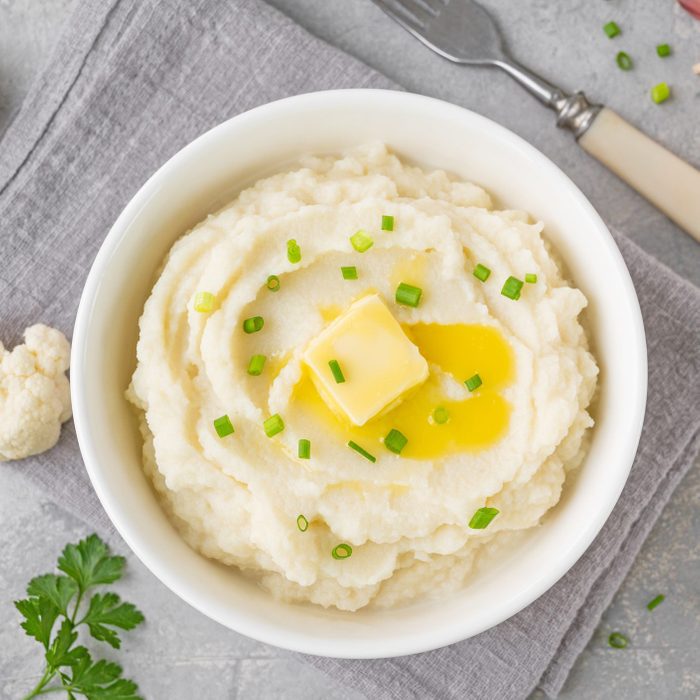
Pair starchy with non-starchy veggies
Instead of: two pounds potatoes
Buy: one pound potatoes plus one pound cauliflower florets
This mashed potato hack keeps your total carbs in check without forgoing flavor. Whip equal parts boiled potatoes together with roasted or boiled cauliflower. The results of this dynamic duo may help you better manage your blood glucose, since they’re carb-friendlier than a huge bowl of mashed potatoes alone: 100 grams (3.5 ounces) of cooked potatoes without skin provides 22 grams of total carbohydrates, versus 13 grams total carbohydrate in the 100 gram (3.5-ounce) combination of cooked potatoes and cauliflower.
Make your pizza game healthier: Shop the 5 Best Cauliflower Pizza Crusts, Recommended by Registered Dietitians
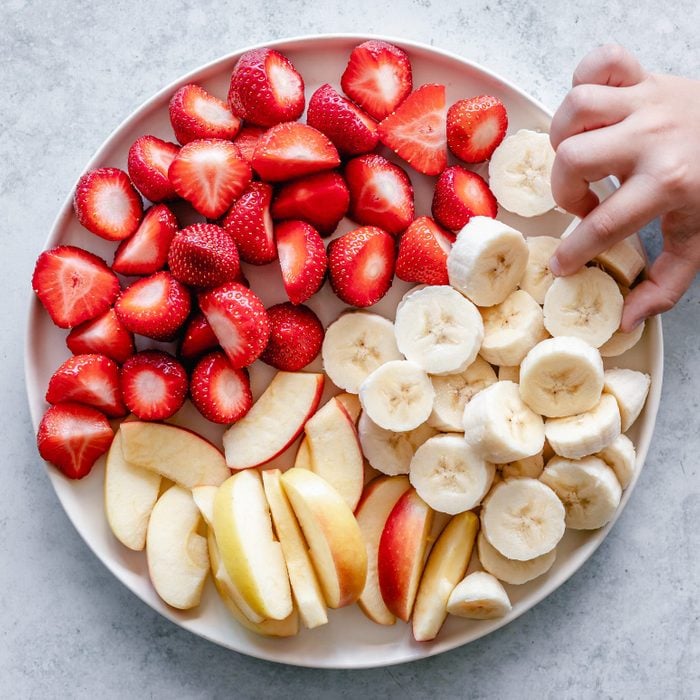
Pick fruit you can chew
Instead of: one quart apple juice
Buy: one bag of apples
Enjoy whole fruit rather than just the juice whenever possible to get all the fiber of the naturally sweet fruit with its edible peel…plus chewing satisfaction. According to USDA data, one medium apple contains 4.4 grams of fiber while a (6.75-fluid ounce) glass or juice box of 100-percent apple juice has 0.4 grams of fiber. The soluble fiber in apples can help slow down absorption of sugars. Polyphenols in apples may have powerful antioxidant properties.
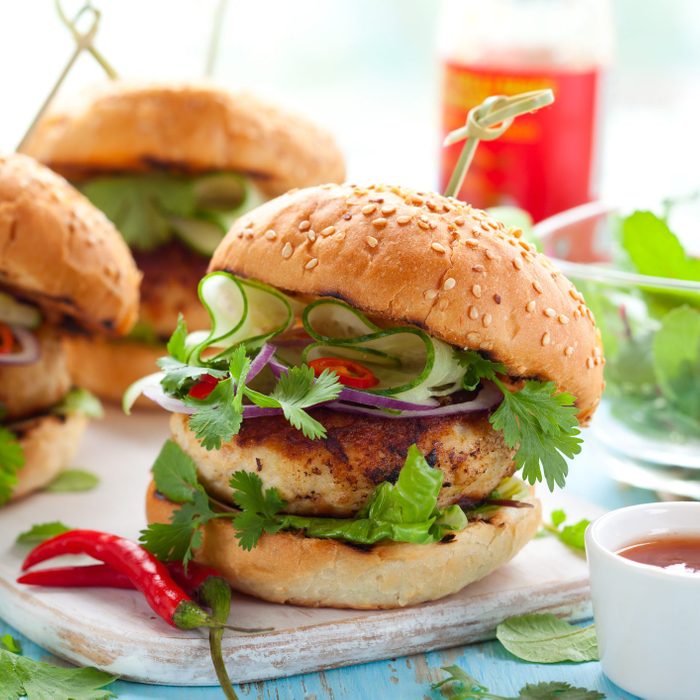
Grill a better burger
Instead of: one pound 85% lean ground beef patties
Buy: one pound ground chicken breast
Ounce for ounce, chicken breast has significantly less saturated fat than the marbly beef of classic burgers. Specifically, a three-ounce cooked 85% lean ground beef patty has five grams of saturated fat compared to 0.6 grams of saturated fat for a cooked patty made from three ounces of chicken breast meat.
Keeping saturated fat intake low is especially important when you have diabetes to help keep your heart healthy. Pro-tip: make chicken burgers juicier and tastier by combining ground chicken breast with a little plain yogurt, rolled oats, and herbs and spices before cooking.
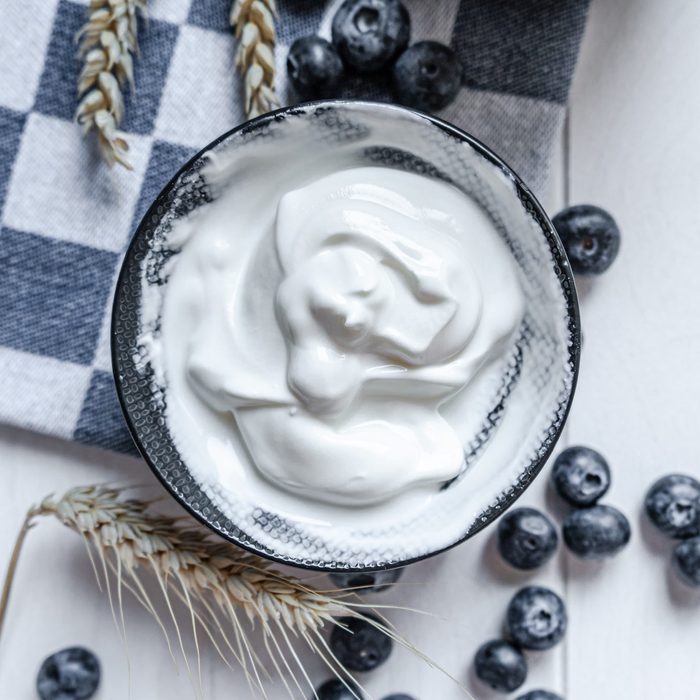
Look for live cultures in the dairy case
Instead of: one container regular cottage cheese
Buy: one container plain low-fat Greek yogurt or cultured cottage cheese
Probiotics are “good” bacteria that help keep your gut healthy. For people with type 2 diabetes, research published in Advances in Nutrition suggested that probiotics may also have glucose-lowering potential. So, drop products with live active cultures (probiotics) into your cart while strolling by the dairy case. Choose plain low-fat Greek yogurt or cultured cottage cheese, like Good Culture Cottage Cheese (which now comes in an organic, lactose-free variety).
Be sure to read the nutrition labels, since probiotics aren’t in all dairy foods. And, for the lower-sodium pick, stick with yogurt.
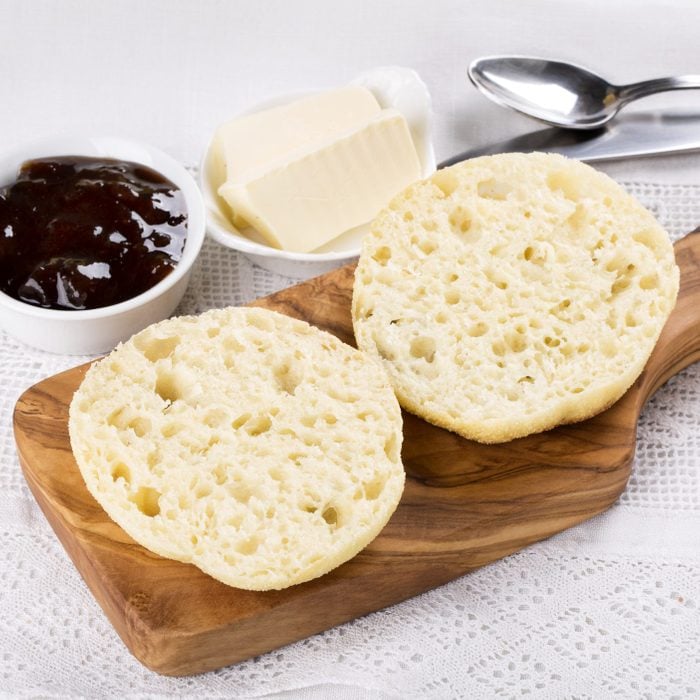
Choose healthier-sized grain portions
Instead of: 1/2 dozen bakery-style plain bagels
Buy: one package of whole grain English muffins
Swapping whole grain in place of refined grain products helps kick up fiber and other plant nutrients. Studies suggests this linked to lower risk of type 2 diabetes. Also, opting for healthier-sized varieties, such as whole grain English muffins rather than big bakery-style plain bagels helps cut calories (and carbs)—not enjoyment—while promoting a healthier weight. In fact, you’ll slash over 250 calories by enjoying a whole-wheat English muffin instead of that oversized five-ounce morning bagel.
This Hidden Oatmeal Benefit Could Lower Your Cholesterol, According to Research
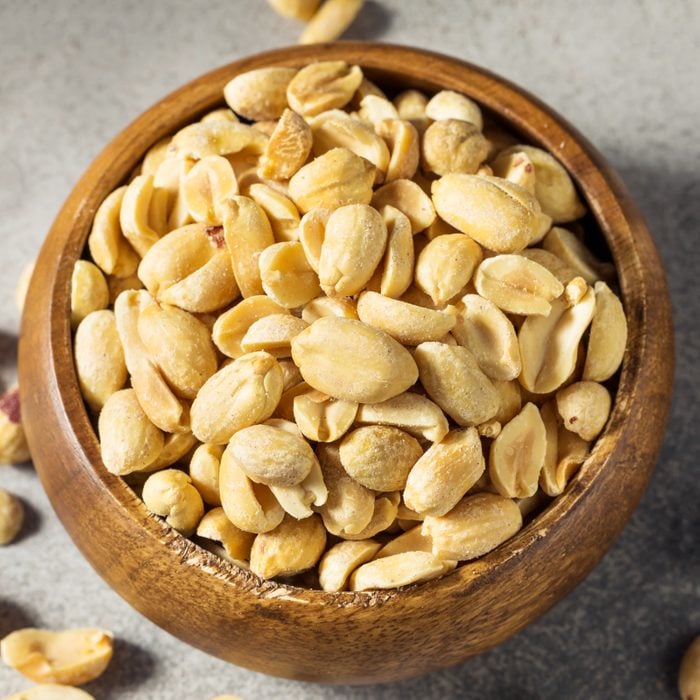
Get your munchies with benefits
Instead of: one bag of potato chips
Buy: one jar or bulk-bin container of roasted peanuts
It’s a no-brainer: a small handful of nuts is a better bet than potato chips. Peanuts, for instance, offer a triple whammy of dietary fiber, plant protein, and healthy fat, which can boost satiety. Greater satisfaction means a greater chance you’ll keep mealtime portions right-sized.
When peanuts or other nuts are eaten along with carb-rich foods, they can help slow down the blood sugar response. Plus, a Mediterranean study found that higher nut consumption may be associated with better metabolic status.
This Is Why You Can’t Ever Just Eat One Potato Chip, According to Science
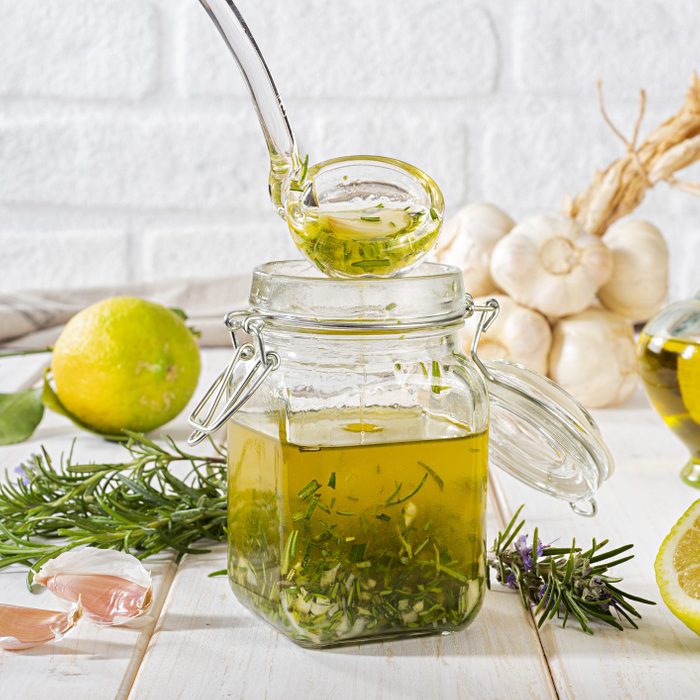
Dress a salad smartly
Instead of: one bottle of fat-free salad dressing
Buy: one small bottle olive oil plus one small bottle balsamic or red wine vinegar
Some bottled salad dressings can trick you. For instance, “fat-free” salad dressing may be loaded with added sugars. (For reference: four grams of sugar is equal to one teaspoon.)
So, read salad dressing labels carefully for sneaky ingredients, especially excess salt (over 250 milligrams of sodium per two-tablespoon serving) or added sugars (more than five grams added sugars per two-tablespoon serving). Better yet, keep it simple and make your own vinaigrette using 2-3 parts oil to 1 part vinegar.
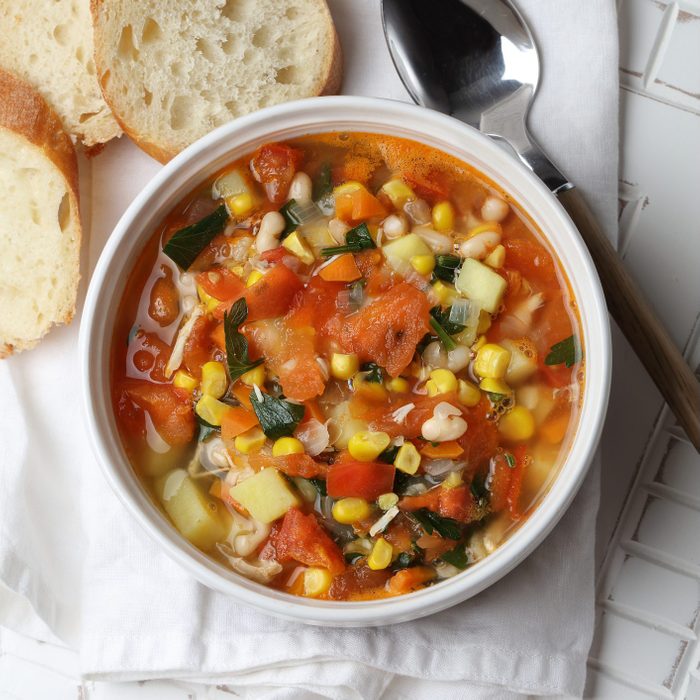
Select less salty soup
Instead of: one can/carton of vegetable- or bean-based soup
Buy: one can/carton of low-sodium vegetable- or bean-based soup
When compared to people without diabetes, sodium levels were higher in patients with type 2 diabetes, based on a meta-analysis published in European Journal of Nutrition. Curbing sodium intake is beneficial for people with diabetes since too much may increase your risk for high blood pressure.
So, slurp up soup that’s low in sodium. And kick up flavor with a splash of cider vinegar, grated citrus zest, herbs, spices, or a dash of hot sauce.
Your Risk of Developing Diabetes Goes WAY Up If You’re Eating Too Much Sodium—Here’s Why
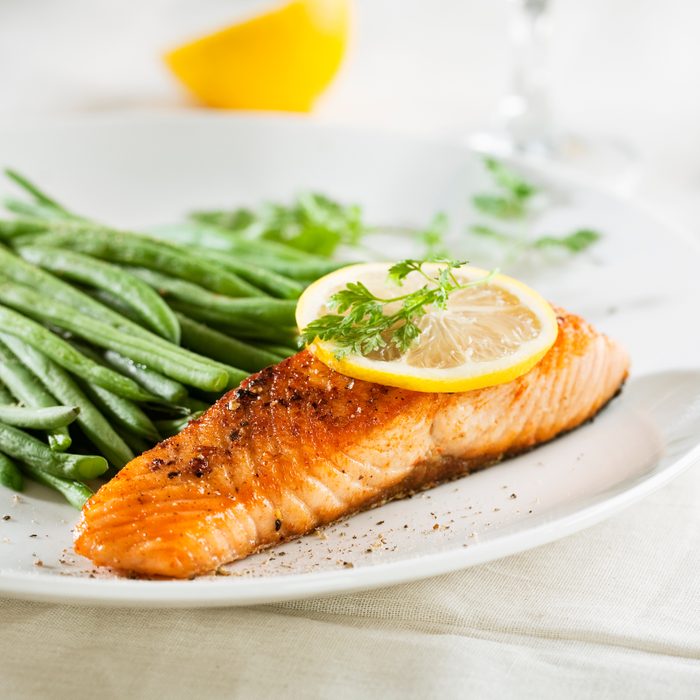
Go for “naked” fish
Instead of: Breaded fish sticks
Buy: Frozen salmon filets
Cut salmon into large cubes, season, and grill on skewers. Or make fish sticks by simply cutting into skinny filets, season, and roast. Why? Research published in Diabetes Care finds that eating oily fish may be associated with a lower risk of type 2 diabetes. Non-oily fish, like the whitefish in fish sticks, didn’t show this link.
Salmon is an oily fish and a major source of omega-3 fatty acids, a heart-friendly fat. Plus: when you make you own salmon skewers or sticks, you won’t have extra carbs from breading.
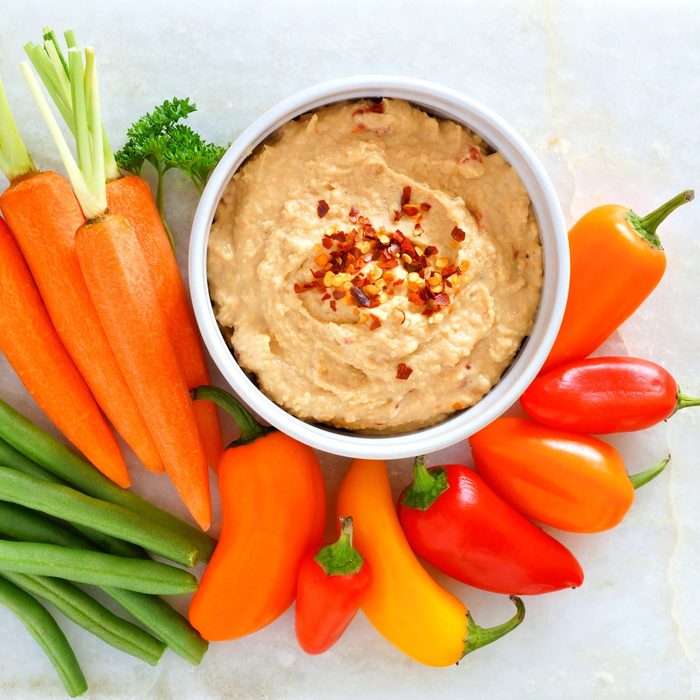
Do dip with a punch of protein
Instead of: one container of ranch or sour cream & onion dip
Buy: one container of pulse-based dip, like hummus
Wise snacking can be helpful for managing blood glucose. It can also be delicious. Dunk veggies or whole-grain pita wedges into pulse-based dip, like hummus, black bean dip, or lentil dip. Check this out: one-quarter cup (that’s 60 grams) of onion dip has 208 calories, five grams of saturated fat, 1.2 grams of protein, and 0.1 grams of fiber, while one-quarter cup hummus has 142 calories, 1.5 grams of saturated fat, 4.7 grams of protein, and 3.3 grams of fiber. Hummus clearly wins!
For more wellness updates, follow The Healthy on Facebook, Instagram, and Twitter. Keep reading:
- Here’s How Long You Need to Walk to Lower Your Blood Sugar, New Research Finds
- The 16 Most Life-Changing Health & Wellness Books of 2022, Say Therapists and Readers
- The Best Juice to Sip on To Reduce Inflammation, Says Dietitian
- Here’s What Made Jessica Alba Decide Life “Can’t Revolve Around Career and Work”
